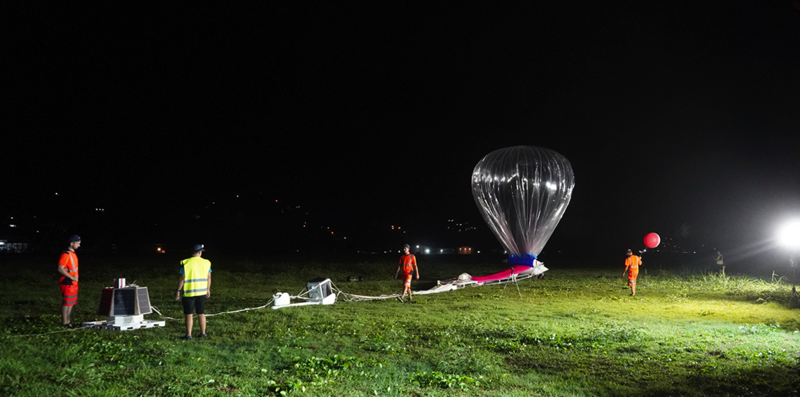A team of meteorologists will launch forty high-altitude balloons from the Indian Ocean starting this year to study poorly understood weather phenomena around the equator. The balloons will be equipped with measurement instruments and powered by custom-built, ultralight solar panels developed at the Centre Suisse d’Electronique et de Microtechnique, Neuchâtel (CSEM).
Meteorologists know that the equator is home to the most powerful weather phenomena on Earth. These phenomena can be felt as far as the North and South Poles, yet they remain largely a mystery. So far, few studies have been conducted on how the troposphere and stratosphere interact along the equatorial belt.
That is set to change thanks to an international project called Strateole-2, launched under a French initiative (CNES and CNRS). The project team will collect data using pressurized, high-altitude balloons developed by CNES. Two strings of twenty balloons each will be sent up from the Indian Ocean three years apart; each string will make two or three trips around the world over a period of three months. The goal will be to obtain the information needed to better understand equatorial weather phenomena, test the researchers’ models and validate computer simulations.
Harvesting data
The balloons consist of a transparent, helium-filled sphere either 11 or 13 meters in diameter, a basket that serves to control the balloon’s flight and a second basket containing an array of measurement instruments. The instruments were designed to withstand the low air pressure and temperature (–85°C) that they will encounter so high up. The balloons will collect a wealth of data on air humidity, ozone and CO2 concentrations, the presence of ice particles, ambient temperatures and pressures, and so on. Some data – like air temperature, pressure and wind speed – will be sent in close to real time to the World Meteorological Organization (WMO) in order to improve its tropical weather forecasts.
Custom-built solar panels
To power the balloons and onboard instruments, engineers at CSEM developed special solar panels made out of proprietary ultralight composites. Each basket will hold four to six solar panels in the shape of a square or a trapezoid, and each panel will have nine to twelve solar cells. The biggest panels will have a capacity of 40 W and the smallest 30 W. The panels are currently being fabricated at CSEM’s labs in Innoparc, located in Hauterive in the Canton of Neuchâtel.
“We successfully tested the panels in a pilot run of eight flights in the winter of 2019–2020,” says Stéphanie Venel, head of the Strateole-2 project at CNES, in Toulouse. “And so now we’ve begun”
Images: CNES/CSEM
Quelle:
Centre Suisse d’Electronique et de Microtechnique SA (CSEM), Neuchâtel, Feb 10 2021


